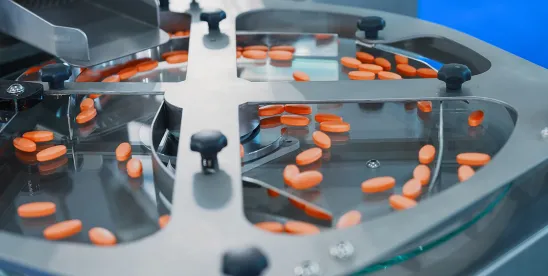This week, underscoring a commitment to national security, the White House and the Food and Drug Administration (FDA) issued separate communications that aim to bolster domestic drug manufacturing while tightening oversight of foreign facilities. But they also raise questions about implementation, industry impact, and long-term effects. This is another step from the Department of Commerce Bureau of Industry and Security’s (BIS) Section 232 investigation into pharmaceuticals initiated on April 1, 2025. These developments, while unsurprising, should be viewed within the constellation of broader administration policy, and could make real progress on furthering the manufacturing onshoring agenda for the critical life sciences industry.
The Executive Order: Streamlining Domestic Manufacturing
Signed on May 5, 2025, the Executive Order titled “Regulatory Relief to Promote Domestic Production of Critical Medicines” aims to reduce barriers to building and expanding pharmaceutical manufacturing capacity in the United States.[1] The White House frames this as a national security imperative, citing estimates that new facilities can take 5 to 10 years to construct due to regulatory hurdles—a timeline deemed “unacceptable.” The order directs the FDA and the Environmental Protection Agency (EPA) to review and streamline regulations related to the approval of new and expanded manufacturing sites, eliminate “duplicative or unnecessary requirements,” and maximize “timeliness and predictability” in reviews.
The order also emphasizes early collaboration between the FDA and domestic manufacturers to support facilities before they come online. This could mean more pre-approval guidance or technical assistance, potentially reducing delays in licensure inspections. Additionally, the order calls for increased fees and inspections for foreign manufacturing plants, alongside stricter enforcement of active pharmaceutical ingredient (API) source reporting. The FDA is tasked with publicly disclosing the number of foreign inspections conducted, broken down by country and manufacturer, and considering a public list of non-compliant facilities.
This push for domestic production builds on Trump’s first-term efforts, such as Executive Order 13944 (August 6, 2020), which aimed to reshore essential medicines. The current order reflects a broader “America First” agenda, with the administration arguing that domestic facilities face more frequent and rigorous inspections than their foreign counterparts—a disparity they seek to address.
FDA’s Expanded Unannounced Inspections: Leveling the Playing Field?
On May 6, 2025, the FDA announced plans to expand unannounced inspections at foreign manufacturing facilities producing drugs, food, and medical products for the U.S. market. This builds on a pilot program launched under the Biden administration in India and China, which had stalled due to recent staff cuts. The agency’s goal is to ensure foreign facilities face the same level of scrutiny as domestic ones, addressing long-standing concerns about inconsistent oversight. The FDA emphasized that it can take enforcement actions—such as warning letters or import bans—against facilities that delay, block, or refuse these inspections.
FDA Commissioner Marty Makary, appointed under the Trump administration, underscored that these surprise inspections aim to align foreign oversight with domestic standards. The agency also plans to optimize inspector resources by reducing time spent in-country, allowing for more inspections without additional staffing. This is particularly significant given recent reports of layoffs and budget constraints at the FDA, which have strained its inspection capacity.
Context and Analysis: Opportunities and Challenges
These actions don’t exist in a vacuum. Since the inauguration, the FDA has undergone significant changes, reflecting the administration’s broader push to reduce bureaucracy, roll back regulations, and prioritize domestic interests. The appointment of Marty Makary as FDA Commissioner and Robert F. Kennedy Jr. as Health and Human Services Secretary has set a tone of aggressive reform. These changes suggest a dual focus: easing regulatory burdens for U.S. manufacturers while intensifying scrutiny of foreign ones. However, the FDA’s ability to execute these policies amidst staffing shortages and budget cuts remains a critical question.
Opportunities naturally reveal themselves. First, the Executive Order’s emphasis on streamlining regulations could significantly reduce the time and cost of building or expanding U.S. manufacturing facilities. The news cycle has been full of recent announcements—totaling in the multiple billions—by both large and small pharma companies making commitments to invest in U.S. manufacturing and research and development. Second, expanded unannounced inspections may deter foreign manufacturers from cutting corners, potentially reducing the competitive advantage of lower-cost production in countries like India and China. This could benefit U.S. contract manufacturing and development companies by narrowing the cost gap, but to be sure, could result in at least a short-term cost increase for manufacturers looking to move operations back home. Finally, the promise of pre-approval collaboration could help companies navigate complex—and sometimes confusing—regulatory requirements, reducing the risk of delays or rejections during licensure inspections.
But challenges are also plentiful. First, the FDA’s recent layoffs and budget constraints raise concerns about its capacity to conduct more foreign inspections or provide robust support for domestic manufacturers. The agency’s Office of Inspections and Investigations was already struggling with a 16% vacancy rate among investigators before these changes. It was reported that, as of September 2024, 42% of the 4,700 plants that manufacture drugs for the U.S. were overdue for inspection.[2] Second, higher inspection fees and stricter API source reporting could raise operating costs for foreign facilities, potentially leading to supply chain disruptions or price increases for U.S. consumers. Companies reliant on foreign APIs may need to reassess their sourcing strategies. Third, the White House’s foreshadowed tariffs on imported drugs could complicate the economics of foreign manufacturing, forcing companies to weigh the costs of relocating production to the U.S. against potential trade barriers. Finally, while streamlining domestic approvals is appealing, eliminating “duplicative or unnecessary” requirements risks weakening oversight. The opioid crisis, partly fueled by lax FDA standards in the past, serves as a cautionary tale.
Tariffs: Potential Impact and Twists
Further, tariffs continue to place economic pressure on foreign manufacturing. Large U.S. manufacturers have estimated tariff impacts of “a few hundred million dollars,” primarily due to tariffs on Chinese products (e.g., the International Emergency Economic Powers Act (IEEPA) 20% fentanyl tariff, the IEEPA 125% reciprocal tariff, Section 301 tariffs) as well as China’s retaliatory tariffs. As a result, manufacturers have begun to implement mitigation strategies. For example, companies are now beginning to invest more heavily in domestic R&D and manufacturing in order to meet U.S. product demand, while maintaining manufacturing facilities abroad to serve global demand.
In addition to the tariffs imposed by the statutory authorities listed above, on April 1, 2025, BIS initiated a Section 232 investigation under the Trade Expansion Act of 1962 into pharmaceuticals. This investigation focuses on the national security implications of importing pharmaceuticals and pharmaceutical ingredients, including finished generic and non-generic drug products, medical countermeasures, critical inputs like active pharmaceutical ingredients and key starting materials, and derivative products of these items. The investigation must conclude within 270 days. Following the investigation, the President has the authority to impose various trade restrictions, including tariffs on the investigated products.
Generally, these tariffs are typically additive. However, in a twist, the relationship between Section 232 tariffs and the 125% reciprocal tariff are exclusive of each other. For example, if a Chinese product is subject to a Section 232 tariff, it will not be subject to the 125% reciprocal tariff. This exclusivity might offer some relief to the pharmaceutical industry if Section 232 tariffs are imposed on certain Chinese pharmaceutical products and are set at a rate lower than 125%.
These developments may demand strategic adjustments, including but not limited to:
- Reevaluate Supply Chains: this one is debatable, but it is as good a time as ever to assess reliance on foreign manufacturing and consider investing in U.S. facilities to capitalize on regulatory relief and mitigate tariff risks.
- Strengthen Compliance Programs: prepare for unannounced inspections by enhancing quality control systems and ensuring accurate API source reporting. Non-compliance of course could lead to public shaming or import restrictions.
- Engage with FDA Early: leverage the FDA’s offer of pre-approval support to streamline facility approvals. This could involve early consultations on emerging technologies or production line modifications. The FDA is not always the easiest to correspond with—especially recently—but the administration’s commitment to domestic manufacturing could yield a critical advantage over foreign entities when it comes to dealing with FDA.
- Monitor Tariff Developments: With the administration promising more details on tariffs within weeks, companies should model the financial impact of potential trade policies and explore diversification strategies.
Looking Ahead: Balancing Speed, Safety, and Security
The administration’s FDA is charting a course that prioritizes domestic manufacturing and robust foreign oversight, but the path is fraught with challenges. Streamlining regulations could unleash innovation and strengthen the U.S. drug supply chain, but only if the FDA retains the expertise and resources to maintain safety standards. Expanded unannounced inspections are a step toward domestic parity, but their success hinges on adequate staffing and international cooperation. Meanwhile, the specter of tariffs looms large, potentially reshaping the economics of the global pharmaceutical industry.
As with everything recently, it is too early to say whether and to what extent these actions will have a meaningful impact, but the number of policy moves is growing to a critical mass. The coming months will reveal whether the FDA can deliver on these ambitious goals or if resource constraints and policy trade-offs undermine their impact. For now, manufacturers should stay proactive, aligning their strategies to the extent possible with the administration’s priorities while safeguarding compliance in an increasingly complex and uncertain regulatory environment.
FOOTNOTES
[1] Executive Order available here: Regulatory Relief to Promote Domestic Production of Critical Medicines – The White House
Julian Klein also contributed to this article.




 />i
/>i

